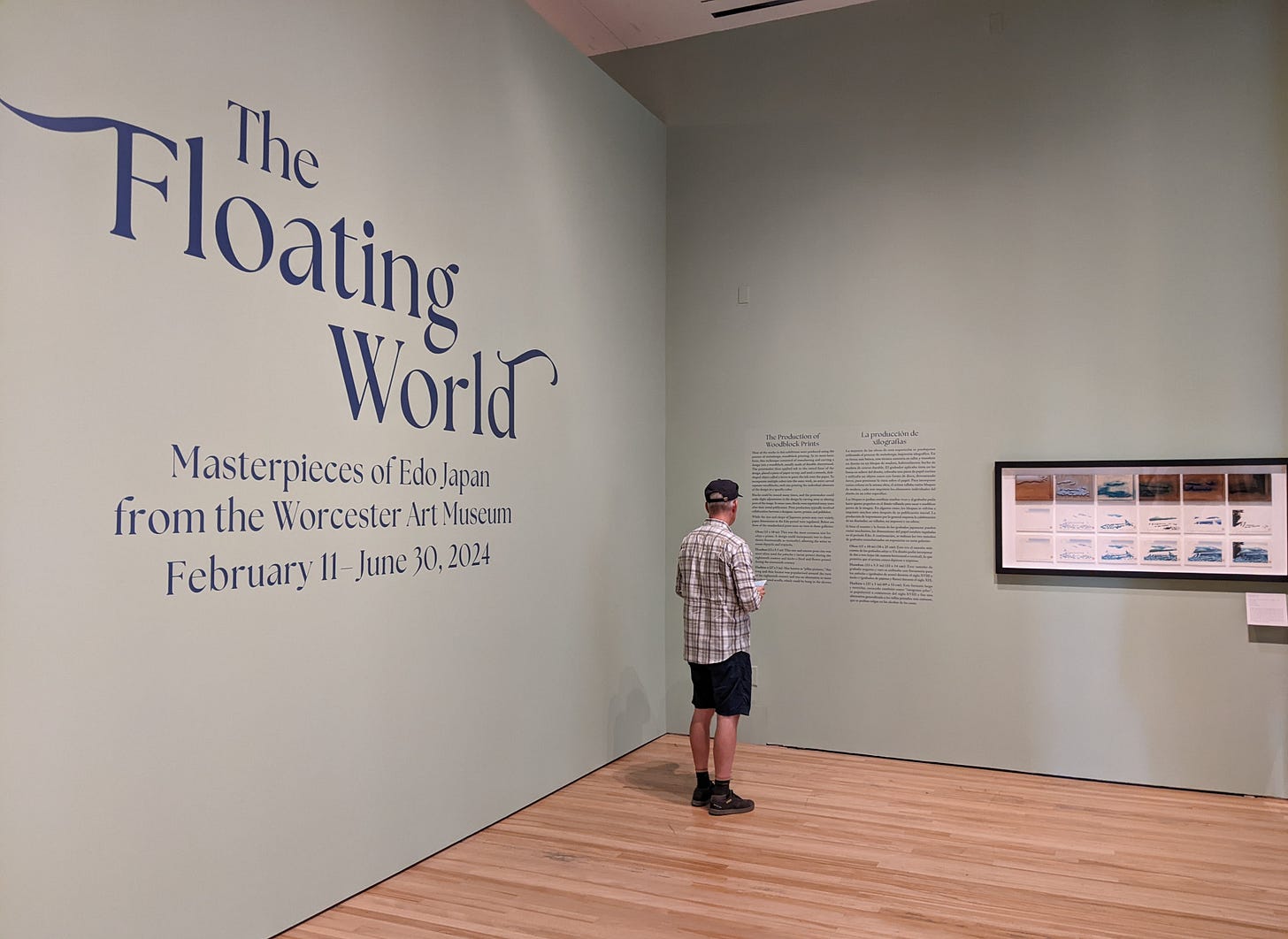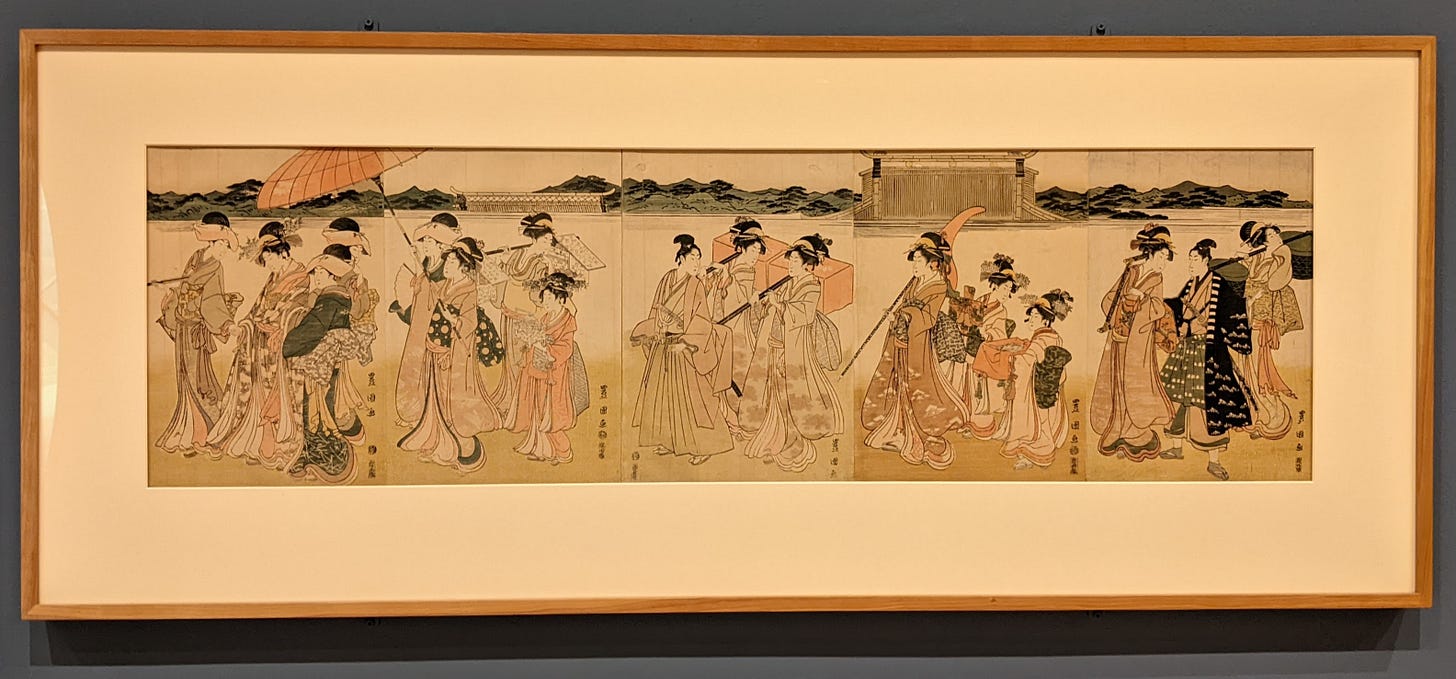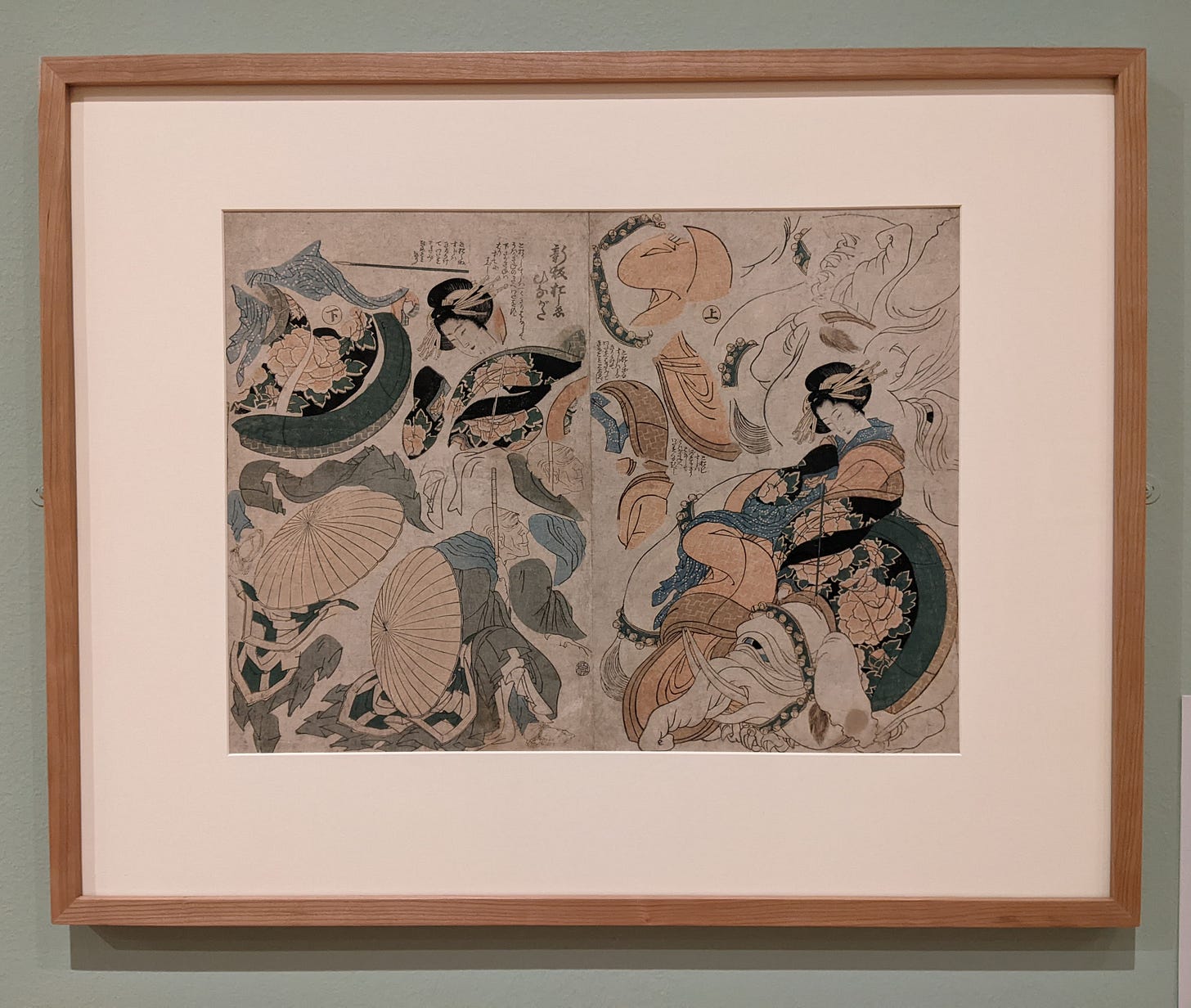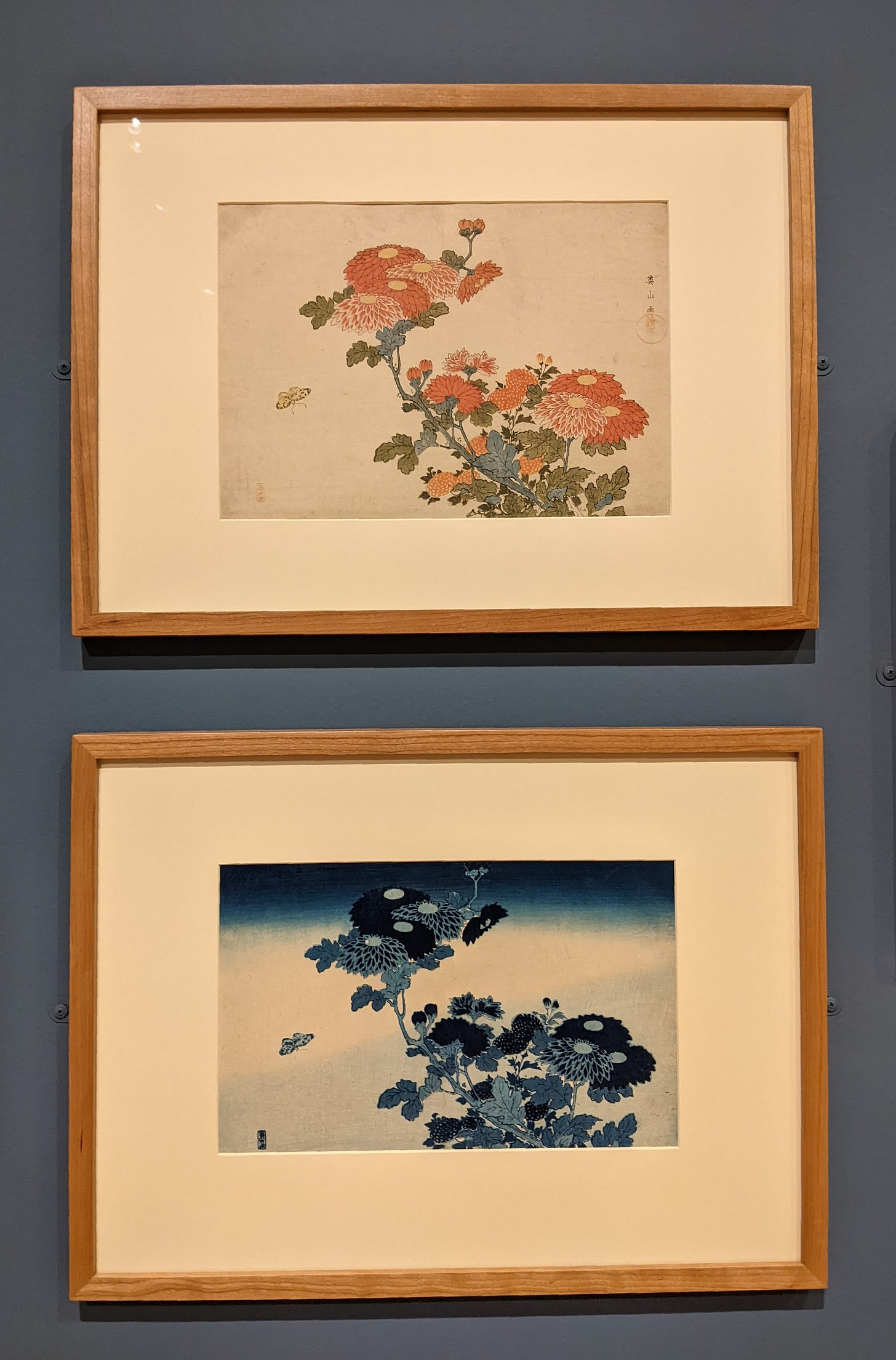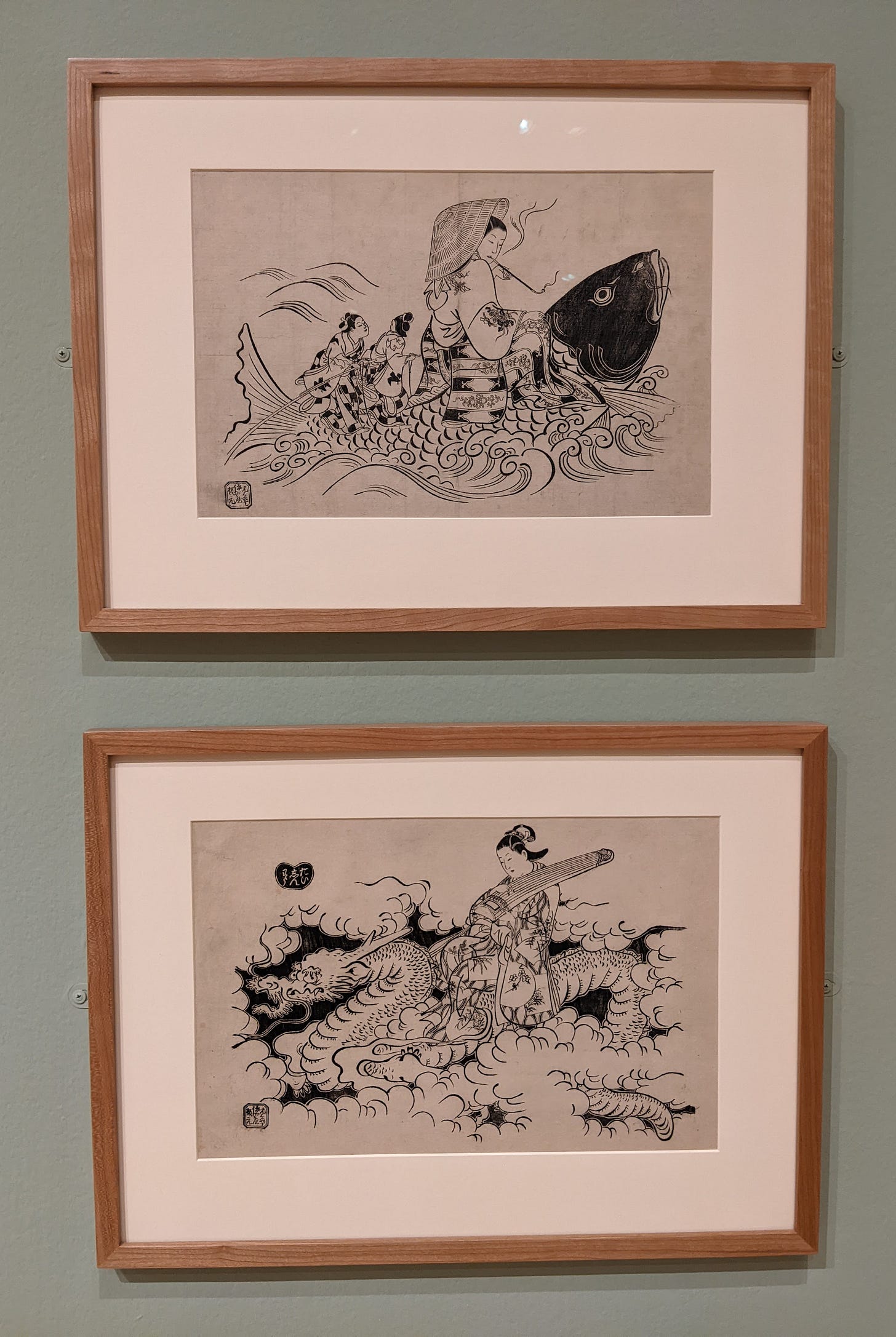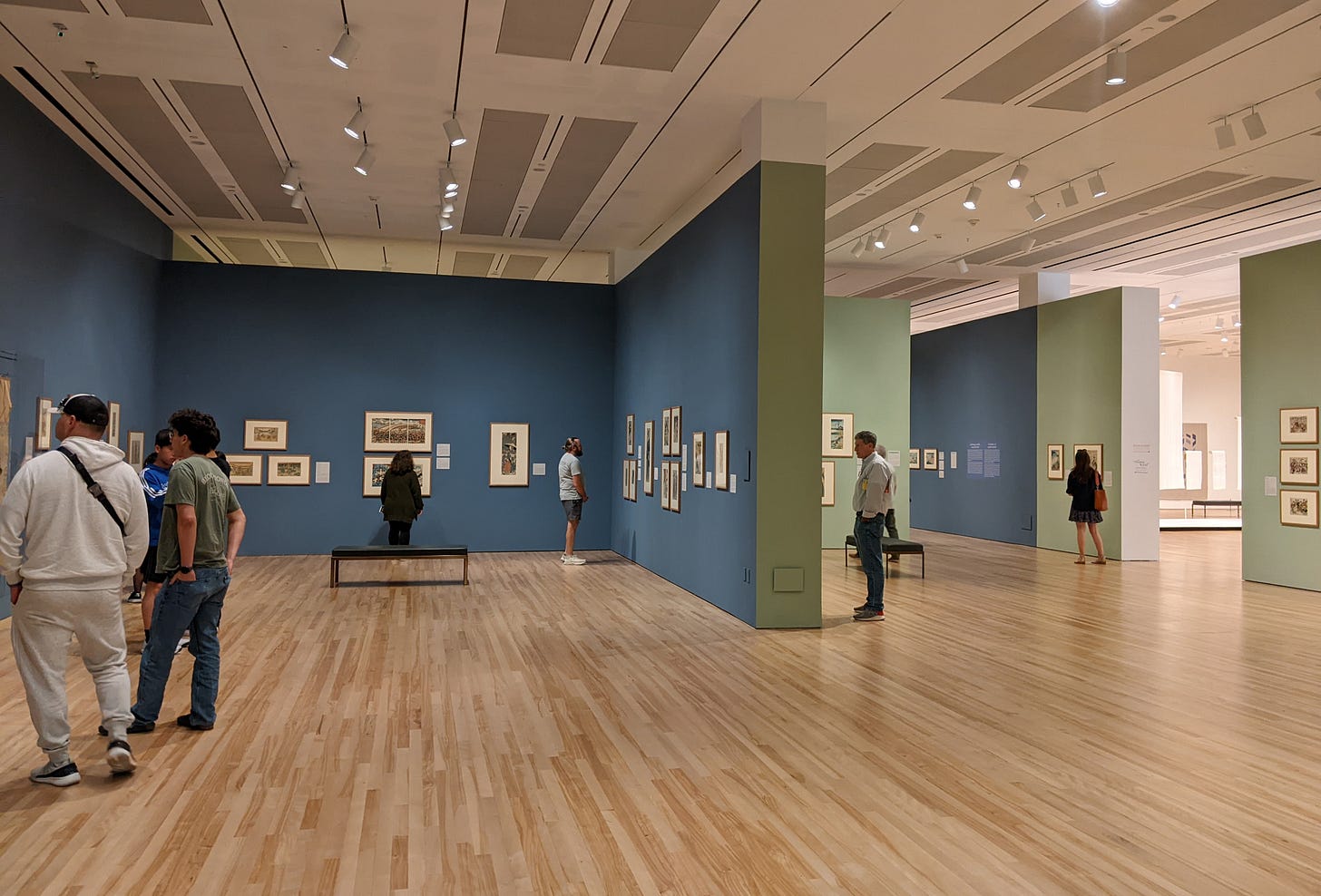After a mention from
about this special exhibit at the Blanton Museum in Austin, TX, I checked the dates and was excited to see that it would be on while we were there for the total solar eclipse!The exhibit includes more than 130 woodblock prints and painted scrolls, and is the first time the Worcester Art Museum1 has these works out on the road. It was really an amazing treat to get to see them in person!
There was a wide variety of subject matter, from the geisha and 'night-on-the-town' type scenes that might first come to mind when one hears ukiyo-e (pictures of the floating world), to portraits of actors; animals, flowers, landscapes and travelogue images from popular tourist routes, with crackerjack titles like Hokusai's series of "Remarkable Views of Bridges in Various Provinces". The level of intricate detail was mind-boggling.
I particularly enjoyed the wall texts that discussed process details and other factors about materials that contributed to the work being what it is.
Prussian Blue!
"While attempting to create a synthetic alternative for the rare red cochineal pigment in the Berlin lab of Johann Conrad Dippel in around 1706, Swiss dye manufacturer Johann Jacob Diesbach (circa 1670-1748) accidentally produced a dazzling blue pigment. Later called Prussian blue or Berlin blue, it was the first stable and lightfast blue pigment to be widely distributed around the world. It reached Japan for the first time in the 1820s on Chinese and Dutch trading ships and quickly became a popular substitute for other blue pigments like indigo and dayflower, both of which tended to discolor over time and were more expensive to produce."
Rules about paper size!
"Starting in the seventeenth century, edicts were periodically issued by the ruling Shogunate to prevent mokuhanga printmakers from using large sheets of paper, as it would have been a show of excess that subverted strictly enforced class hierarchies. Ukiyo-e designers responded by creating multi-panel prints."
Each sheet could stand alone, but they could also be combined into a larger work! What a clever (and of course obvious, once one sees it) work around. And it would also give buyers options - maybe they don't want all of the panels.
"Each of the five panels in this print (A Procession of Women Going to a Shrine, above) varies slightly in color and condition, indicating that they probably came from different impressions of the same design and were united later. They thus allow a sense of how different impressions of a print can vary, as well as how printing inks and paper change over time depending on how the images have been stored or displayed."
There was a nice display at the start of the exhibit, by a modern printmaker, showing the blocks required for the different colors of a multi-color print, a print from each individual block, and then a print with each block added on to show how all the blocks combine to the final print.
And part way through the exhibit was a piece by Hokusai, which deconstructs one of his works!
I had not known that "Hokusai championed accessible art and design education in the Floating World. Over the course of his career, he published a number of e-hon (picture books) demonstrating how simple forms could be used to draw complex subjects. These books also included his own sketches and notes."
"Since each compositional element here has been isolated, and in some cases rotated, the viewer can easily distinguish it and see how it relates to the other elements. Hokusai called such images "painted rag pictures," presumably because each motif is like a patch in a quilt that is ultimately linked to others to form the whole."
It was also fascinating to see a work printed in two very different color schemes.
And I particularly enjoyed these black and white pieces. The variety and expressiveness of the lines was amazing. The long, narrow format of the Demon Queller pieces somehow both highlight and contain the Queller’s dynamism.
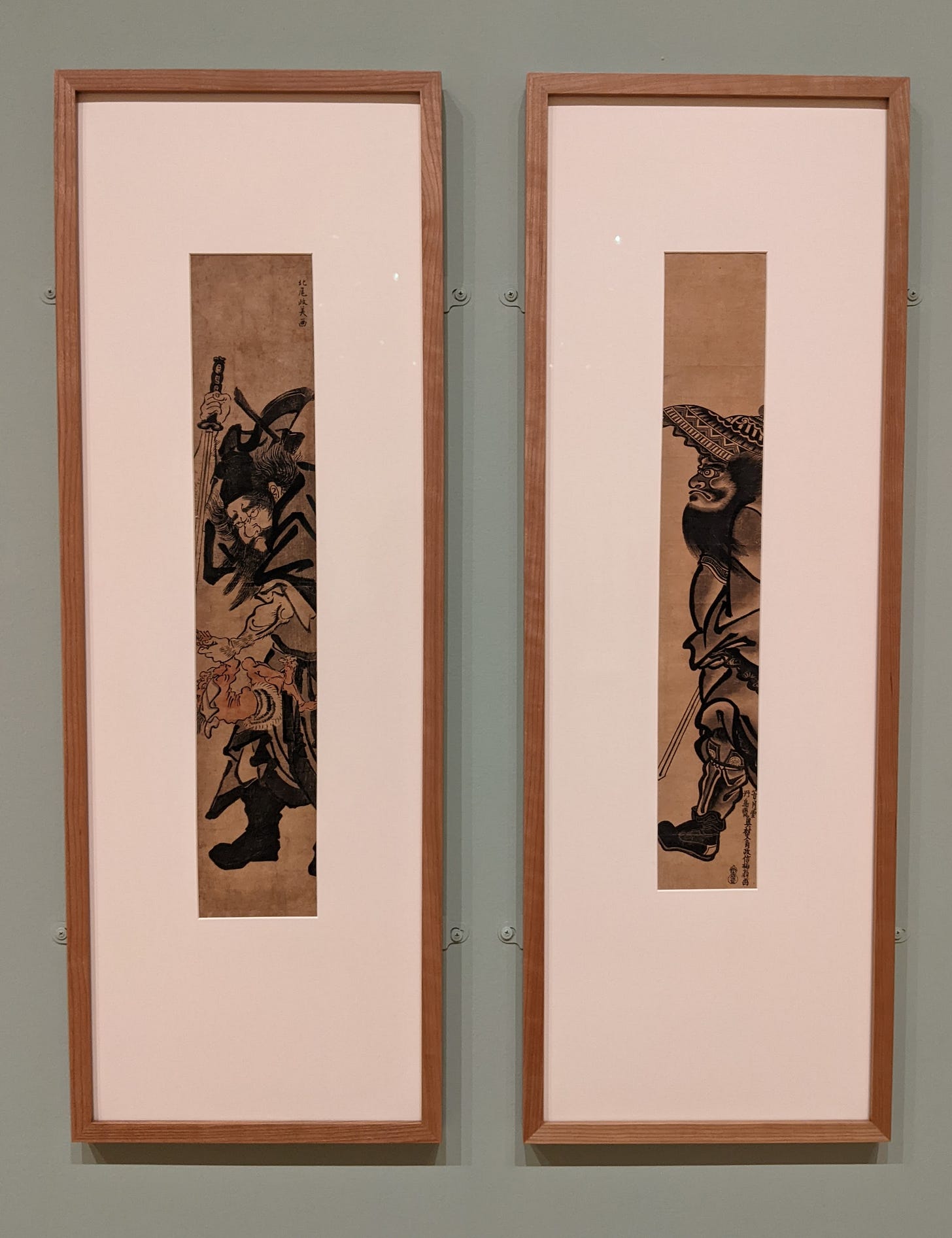
It's a lovely, well-designed show. I really enjoyed it, and would definitely recommend checking it out if you have the opportunity! Exhibit dates: February 11 - June 30, 2024
What are the odds/small world... I have actually been to Worcester, MA! But I don't think I've been to the Art Museum. Looking at their website it seems like I'd remember if I had, but… memory can be a tricky thing. Anyway, it sounds like a great museum, and now I'm curious to go!
"The collection comprises nearly 40,000 works of art from around the world. ...
The Museum is internationally known for its collections of Japanese woodblock prints, ancient art, and American and European paintings. It has the second-largest collection of arms and armor in the United States and was among the first to assemble a photography collection and to acquire paintings by such artists as Claude Monet and Paul Gauguin."
(emPHAsis added - who knew?! and how did it happen??? OK, a bequest from John Chandler Bancroft, although it doesn't say why Worcester... but cool that the work is at a public institution.)


